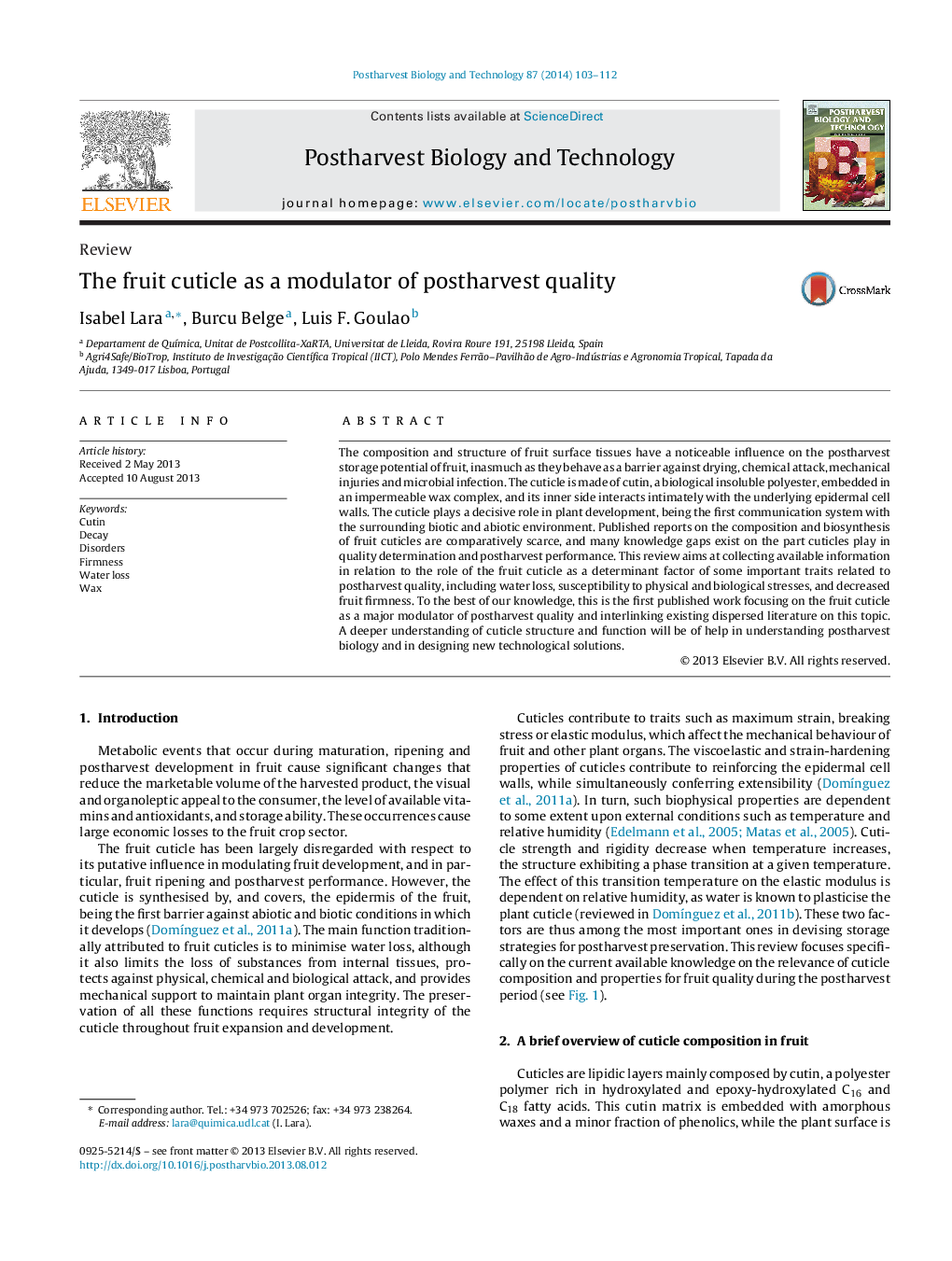| کد مقاله | کد نشریه | سال انتشار | مقاله انگلیسی | نسخه تمام متن |
|---|---|---|---|---|
| 4518335 | 1625007 | 2014 | 10 صفحه PDF | دانلود رایگان |
• The fruit cuticle is an outer lipidic layer composed mainly of cutin and waxes.
• The cuticle is the first barrier between the fruit and environmental conditions.
• This paper reviews information on the relevance of the cuticle for postharvest fruit quality.
• The potential impact of the cuticle on major postharvest traits of fruit is highlighted.
• Cuticles may modulate dehydration, fruit protection, appearance and texture changes.
The composition and structure of fruit surface tissues have a noticeable influence on the postharvest storage potential of fruit, inasmuch as they behave as a barrier against drying, chemical attack, mechanical injuries and microbial infection. The cuticle is made of cutin, a biological insoluble polyester, embedded in an impermeable wax complex, and its inner side interacts intimately with the underlying epidermal cell walls. The cuticle plays a decisive role in plant development, being the first communication system with the surrounding biotic and abiotic environment. Published reports on the composition and biosynthesis of fruit cuticles are comparatively scarce, and many knowledge gaps exist on the part cuticles play in quality determination and postharvest performance. This review aims at collecting available information in relation to the role of the fruit cuticle as a determinant factor of some important traits related to postharvest quality, including water loss, susceptibility to physical and biological stresses, and decreased fruit firmness. To the best of our knowledge, this is the first published work focusing on the fruit cuticle as a major modulator of postharvest quality and interlinking existing dispersed literature on this topic. A deeper understanding of cuticle structure and function will be of help in understanding postharvest biology and in designing new technological solutions.
Journal: Postharvest Biology and Technology - Volume 87, January 2014, Pages 103–112
